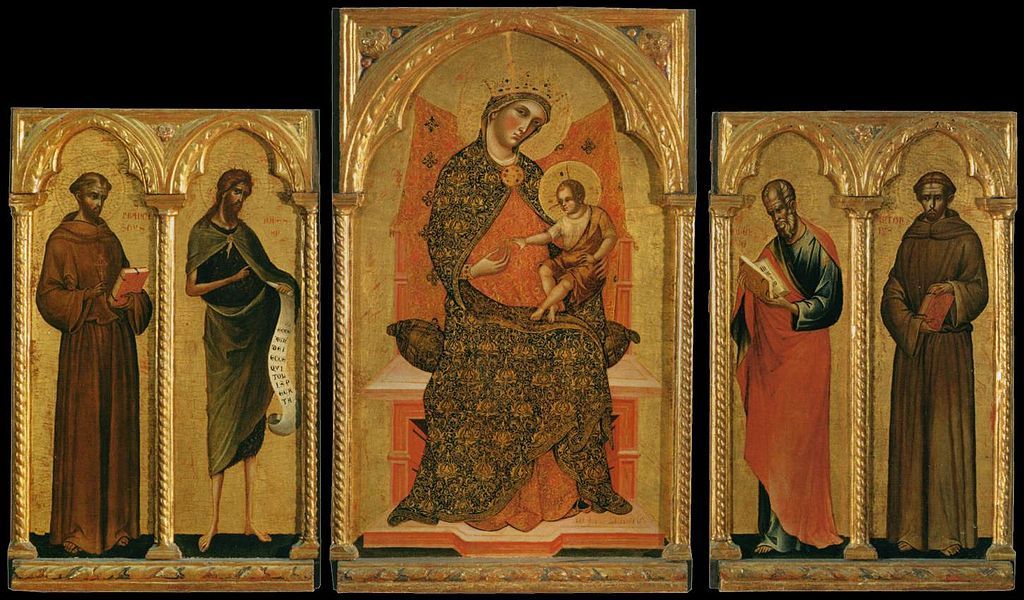Veneto : Paolo Veneziano's Panel

Paolo Veneziano’s 1354 altarpiece, Virgin and Child with Saint Francis of Assisi, Saint John the Baptist, Saint John the Evangelist and Saint Anthony of Padua
Love for Fabric Death by Cloth
Paolo Veneziano’s 1354 altarpiece, Virgin and Child with Saint Francis of Assisi, Saint John the Baptist, Saint John the Evangelist and Saint Anthony of Padua, exemplifies popular surface designs and fabric of the 14th century. This painting not only reflects current textile trends, but also shows the 14th century obsession for luxurious textiles being brought in from China, India, and Egypt into the busy Venetian port. In a way to appreciate the luxurious goods, many artists including Veneziano, payed close attention to the patterns and textures of cloth.
One crucial item, of Venice’s trade history, was that of fabric dyeing materials. Some of the most popular items included, brazilwood, iac and indigo. Brazilwood was crucial for making the rich red dyes; similar to the shade of Mary’s underdress and Saint John the Evangelist’s cloak in this altarpiece. The color red often was used in Virgin Mary’s clothing in many artist’s work throughout the medieval ages. The color signifies wealth. Indigo was also a common color of the clothing of Virgin Mary. Blue dye was cheaper, more accessible, and even the 14th century poor had blue in their clothing. Perhaps, this was a way to show how Mary is humble at the same time as being holy.
While the Virgin Mary was always a common figure in paintings, she began to show up more frequently after the plague of 1348. Some believed that God was punishing humans for their lack of devotion to Mary. Not only is Mary connected to the plague, but also fabric is one of the key factors for the spread of the infected lice causing the Black Death. Once bitten by an infected flea a victim would usually die within three days. Some worried that the plague was spread simply by looking at an infected person. Since there was such a coveting of textiles and wish to recycle materials, clothing of the dead was often reused. There were even sumptuary laws, regulating consumption and increasing the need to recycle goods. These laws were partly in hope to decrease trading, yet, the infected fleas often still resided in the repurposed attire, thus, it actually helped to spread the plague within a city.
Even once the plague was over, like many cities, Venice struggled up until 1353 due to lack of population and a struggling economy. Paolo Veneziano created several works with similar styles to this one in response to the demand for more religious art. While a single image is not enough to extrapolate about a whole decade, the history of the port, the plague, and the multitude of paintings with these elements tell a lot about Venice in the 14th century.
